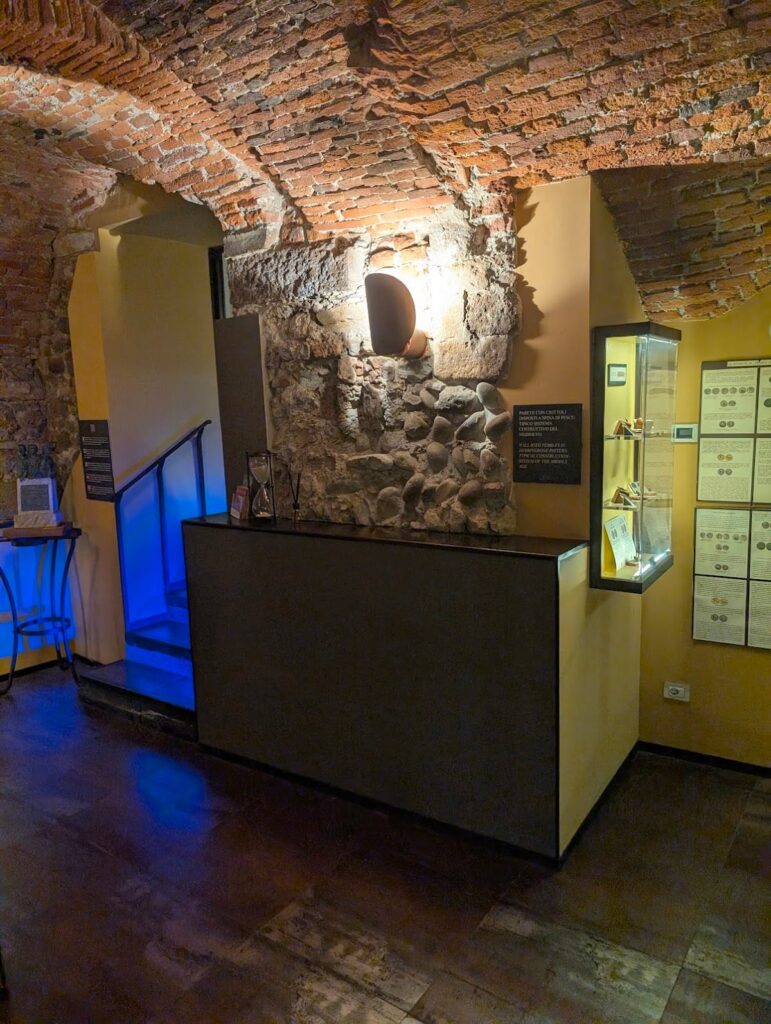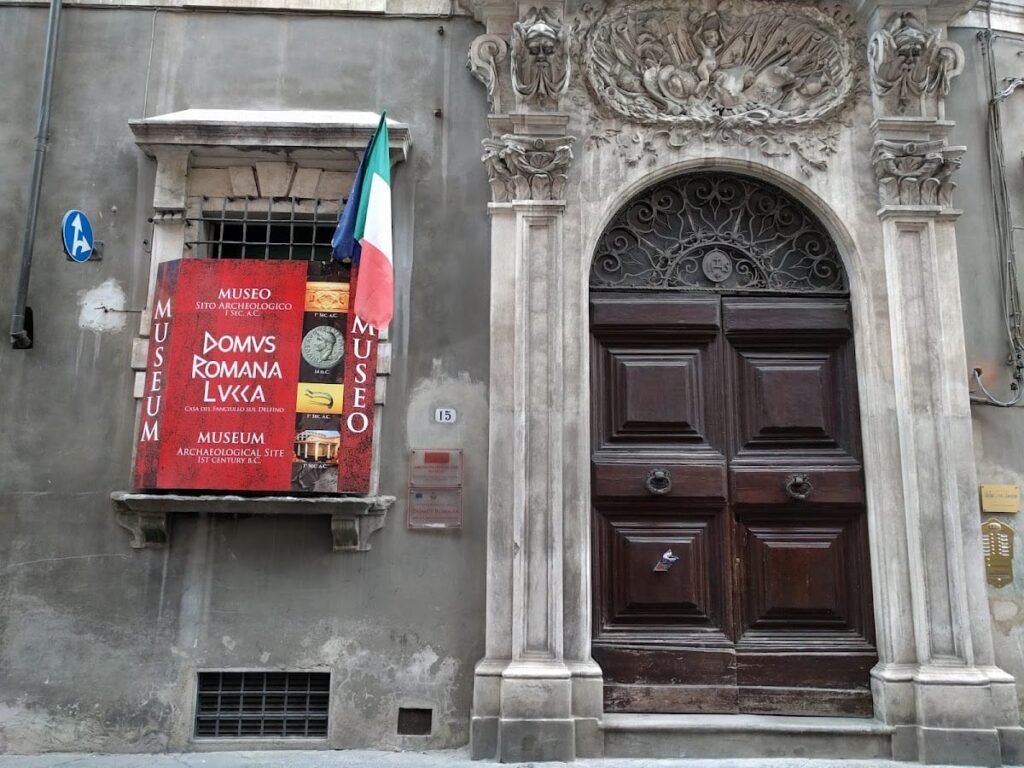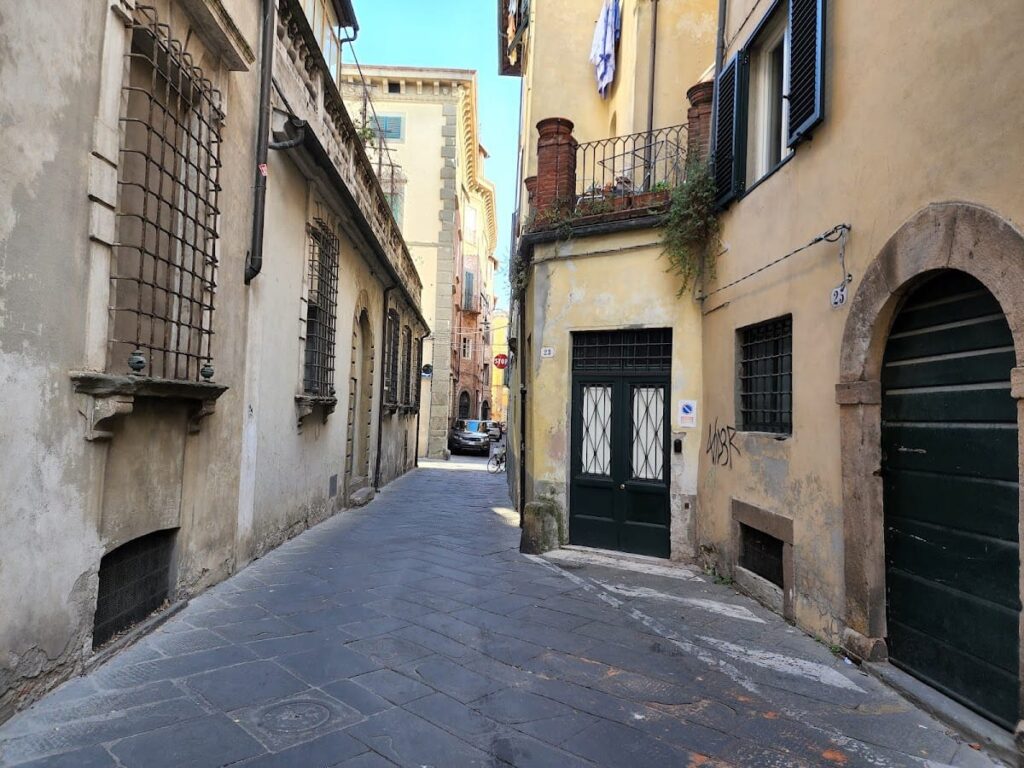Domus Romana Lucca: An Ancient Roman House in Central Italy
Visitor Information
Google Rating: 4.6
Popularity: Low
Google Maps: View on Google Maps
Official Website: www.domusromanalucca.it
Country: Italy
Civilization: Roman
Remains: Domestic
History
The Domus Romana Lucca is located in central Lucca, Italy. It was originally built by the Romans in the early 1st century BCE. The house was part of a Roman urban block and faced a minor Roman street, now known as Via San Giorgio.
During the Augustan period, the Domus underwent renovations. This phase likely enhanced the house’s structure and decoration, aligning it with contemporary Roman styles. The site remained in use through the late antique period, when it experienced transformations including the establishment of a craft workshop.
Following the Roman era, the site saw continued occupation through the Lombard, medieval, and Renaissance periods. Each phase left archaeological traces, showing the Domus’s adaptation to changing social and political contexts. The Renaissance palace above the Domus incorporates medieval and earlier structures, indicating the layering of history at this location.
A ritual deposit found on the site suggests a symbolic “refoundation” rite, possibly linked to a change in ownership during the Roman period. This ritual involved burying an amphora containing a ceramic vessel and a bronze fibula, accompanied by charcoal and ash, indicating a ceremonial act.
The Domus’s name, “Casa del Fanciullo sul Delfino” (House of the Boy on the Dolphin), derives from a decorative motif found on a painted plaster slab. This image of a boy riding a dolphin was part of the original Roman decoration and has become emblematic of the site’s identity.
Remains
The Domus Romana Lucca preserves masonry walls about 60 centimeters high, forming part of the southern side of the house. These walls face an open gravel area that was once bordered by a portico opening onto a Roman street. The construction uses a local technique with yellow limestone blocks featuring gray veins, laid in horizontal courses with lime mortar mixed with sand. The wall core contains small limestone flakes and brick fragments.
Near the foundation, archaeologists found a fragment of a terracotta altar base, possibly a lararium, which was a small household shrine for Roman deities. A black-gloss ceramic cup was also discovered nearby. A water drainage channel runs north to south, built with alternating yellow limestone blocks and smaller stones, sloping toward a terracotta pipe that discharged rainwater.
The external porticoed area on the southern and eastern sides is supported by three bases found in their original positions. In an outside area, a large circular pit contained a deliberately buried amphora oriented east-west. Inside this amphora was a globular ceramic vessel and a bronze fibula of the “Aucissa” type, decorated and featuring an iron double spring. Charcoal and ash inside the vessel suggest a ritual context, possibly related to the Domus’s symbolic refoundation.
Later modifications include evidence of a craft workshop from the late antique period. A bronze coin of Emperor Tiberius, dated to 14 CE, was found on a working surface, indicating continued use and adaptation of the space.
Fragments of painted plaster and a decorative slab in the “Campana” style were recovered. The slab depicts a boy riding a dolphin, framed by palmettes and an egg-and-dart border. This decoration inspired the modern name of the site.
The Domus lies beneath a Renaissance palace featuring large brick vaults supported by medieval rubble and stone walls. After restoration, the ancient structures are visible behind protective wrought iron railings and ventilated glass panels designed to prevent moisture damage.
The site includes educational panels with plans, graphic reconstructions, and images of key finds. A 3D digital reconstruction shows the house and the surrounding Roman block, including nearby remains of a Roman theater. Lighting and large archaeological-themed wall graphics enhance the underground spaces, supporting the preservation and presentation of the remains.










